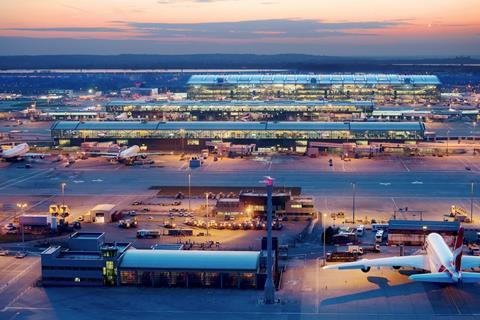Heathrow now expects to complete its third runway “between early 2028 and late 2029” – rather than in 2026 as previously targeted – following a Civil Aviation Authority review of expansion costs.
As part of its economic regulation of the airport’s operator, the CAA on 19 December published a policy update and consultation on the early costs of capacity expansion.

Heathrow Airport had, the report notes, said that in order to retain the 2026 target it would need to bring forward the timing of certain spending, and that total early costs would need to be about £2.9 billion (in 2014 prices), made up of £500 million in planning costs (or Category B costs) and £2.4 billion in early construction costs (or Category C costs).
In response, the CAA asked Heathrow to “consider a range of options for this spending and for the target date for runway opening”. This prompted the operator to draw up four principal scenarios and then variations of these scenarios.
Evidence and views from stakeholders were gathered to inform the CAA’s assessment of the various scenarios. Work conducted by the Independent Fund Surveyor (IFS) indicated that Heathrow’s 2026 target was “optimistic, even with the relatively high level of spending that [the operator] had proposed”, notes the CAA. An opening date “between early 2027 and late 2028” was “more realistic”, in the IFS’s view.
The scenario deemed by the CAA to be in the best interests of consumers is one in which lower levels of early Category C costs are incurred and there is “a modest delay” to opening the new runway.
There is a degree of airline support for the CAA’s favoured scenario, the regulator notes, whereas the airport has not been able to secure such backing for its preferred scenario.
However, the CAA says it intends to “retain a flexible approach” and will, at the time of the next programme gateway in spring 2020, consider the case for accelerating early spending. In the meantime, it is taking comments on its consultation document until 28 February.
Heathrow describes the document as “an important milestone in expanding Heathrow and connecting all of Britain to global growth”, adding: “It increases certainty for our local communities and for the job creation, increased trade and lower airfares that expansion delivers.” The airport pledges to “review the detail” to ensure it can “unlock the initial £1.5-2 billion of private investment over the next two years at no cost to the taxpayer”.
But it adds: “Whilst this is a step forward, the CAA has delayed the project timetable by at least 12 months.”
In its report, the CAA suggests that the scenario it favours involves a delay of only around six to eight months from the “likely” range of dates for Heathrow’s preferred option.
CAA group director of consumers and markets Paul Smith stresses the regulator’s belief that “more runway capacity at Heathrow will benefit air passengers and cargo owners” and that “timely delivery is required to prevent future consumers experiencing higher airfares, reduced choice and lower service quality”.
But he adds: “Passengers cannot be expected to bear the risk of Heathrow Airport Limited spending too much in the early phases of development, should planning permission not be granted.”
Smith argues that the CAA’s consultation “reflects this balance” and “will allow Heathrow’s operator to work towards delivering the new runway within an achievable timetable” but also “reduce the risk of future airport passengers having to meet any undue financial burden if the project does not get planning approval”.


























